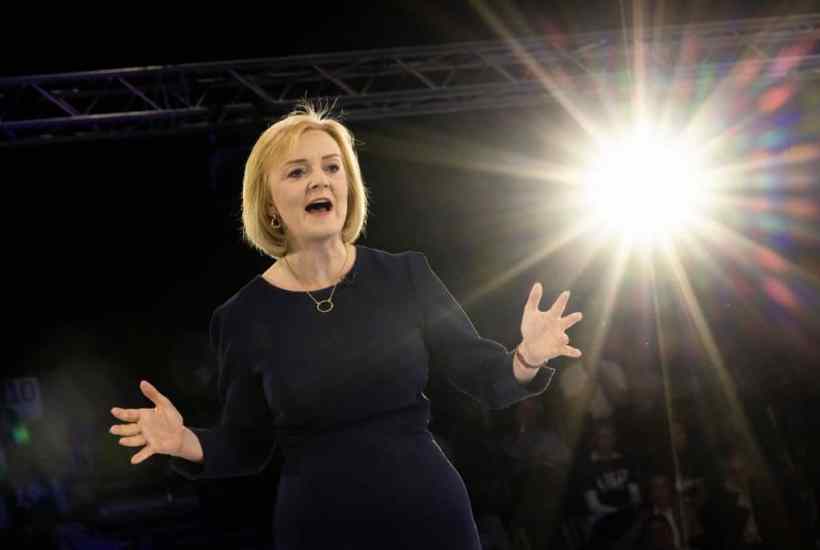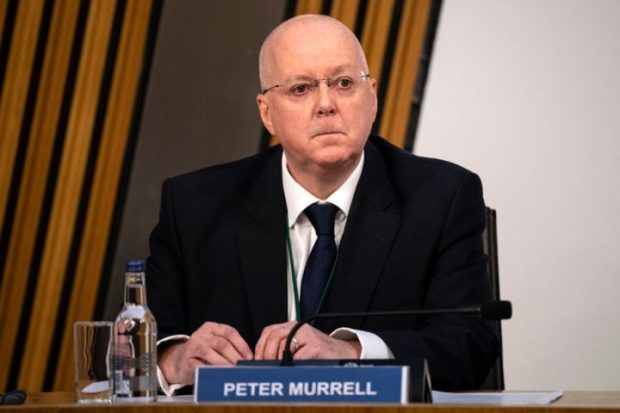The UK economy has so far held up reasonably well in the face of the rise in energy prices. But the latest data suggest a weakening has begun and the economy faces an enormous potential further shock.
For households, the latest price cap announcement means a rise in energy bills of around 80 per cent to £3,549 per year — a bill totalling £99 billion. This is equivalent to a rise in the standard rate of income tax of nine pence in the pound. And this is by no means the full extent of the shock, with projections that the price cap might rise much further, to around £6,000 per year at the start of 2023.
Businesses also face a nasty surprise. Obviously, energy-intensive industries like metals and fertilisers have particularly acute problems. But many tens of thousands of small businesses, employing millions, are also facing bills that are triple or quadruple the previous levels. Without government action there will be a cascade of closures and bankruptcies.
It is unclear whether the scale of the shock has fully sunk in, in Whitehall. Many policy measures being proposed are at best half-measures. The current situation is an economic emergency and requires emergency measures. The price of energy is now extremely distorted and threatens to crush living standards and render large parts of the economy unviable.
What then, is to be done when Britain’s new prime minister takes charge this week? There are a variety of options that could make a difference. All will be very expensive, but that is now unavoidable.
Tax cuts are one possible answer. Personal taxes levied in the UK are equivalent to around £650 billion a year. To offset the latest rise in bills, personal taxes would need to fall £44 billion (seven per cent) and to offset a rise in the price cap to £6,000, they would need to fall by £112 billion (17 per cent). Possible cuts include –
- Cutting VAT. A five per cent cut in VAT, costing around £40 billion a year, would give the median household about £1,300 per year. The advantages of this are that it could be done quickly and would also cut headline inflation.
- A council tax holiday. The average household spends around £1,500 per year on council tax. Remitting the council tax for one year would cost around £41 billion.
- Cutting business rates. Businesses pay around £24 billion in business rates a year. Halving this would cost £12 billion and provide considerable relief. But it would probably be better to target any cuts at smaller businesses.
- Cutting income tax. As noted above, a nine pence in the pound cut in income tax would be roughly equivalent to the latest rise in energy bills facing UK households.
- Cutting VAT on fuel. This is only levied at five per cent on domestic users, so would make only a small contribution A bigger impact would come from slashing VAT on business bills, where it is levied at 20 per cent.
While this approach has some attractions, it also has limitations. It is unclear how well targeted such tax cuts would be. Tax cuts will not spur a dramatic supply side improvement, but they would put money back into people’s pockets and offset the massive extra outlays on energy.
Removing green levies is another possibility. The IFS estimates that various ‘green’ levies on household bills will add around £180 to the typical bill over the next year. Removing these would provide some relief for households, but not nearly enough.
Direct rebates – whereby the Government could offer households a direct rebate on energy bills – is a further option. But this is probably even less easy to target than tax cuts.
What about nationalising energy suppliers? The reality is that this will make little difference, given that their profits only make up a small fraction of total energy costs. Apart from being time consuming and expensive, it would not solve the main problem of highly-priced imported energy.
Surveying these alternatives, it is hard to escape the conclusion that some form of temporary price capping must be considered.This a very ‘un-conservative’ measure for a new Conservative government to consider, but the alternatives all have serious drawbacks and may not prevent the collapse or closure of a huge number of businesses..
The government should fix the price cap around the level it was before the latest increase (with potentially a freeze for business tariffs too), and energy suppliers would cover the difference between that price level and their increased costs of buying gas and other energy sources by borrowing from a ‘deficit fund’ set up by the government. This could cost around £100 billion over two years, with the cost met over 10-15 years (or longer) either by government borrowing, a levy on future energy bills, or some combination of the two.
The main advantage of this approach would be its relative simplicity and directness. Rather than trying to offset energy price rises by cutting other household or business costs, this approach deals with the issue at source. Cutting prices of power procured by suppliers lowers the costs faced by all bill payers downstream.
Any adequate policy or, set of policies, will carry a heavy fiscal cost, probably in the region of £100 billion over the next two years. This sounds terrifying but more was spent during the pandemic, and it amounts to only four per cent of UK GDP of £2.5 trillion. If funded over 20 years via government long-term bond issuance, the additional interest costs per year would be around £3 billion or 0.12 per cent of UK GDP at current rates.
Nor will such borrowing ‘fuel inflation’ as is sometimes claimed. That would only be so if it was financed by Bank of England quantitative easing. With the economy on the verge of recession, such claims are way off-beam.
This is not the stuff of which fiscal meltdown is made, and the cost could be ameliorated by repaying some of the borrowing with a levy on future energy bills or by cutting other government spending. An obvious candidate for the latter would be the incredibly expensive and economically dubious HS2 project, which may well cost above £100 billion, of which only a fraction has been spent or contracted so far.
But it is crucial that if the UK does use drastic government intervention to cap bills for households and businesses, it uses the time gained to radically reform the UK’s energy policy to bring costs down in the medium term and reduce the vulnerability of energy supply to external shocks. This must mean ramping up domestic energy supply of all kinds – including offshore and onshore gas, nuclear and if possible non-intermittent renewables such as tidal power. It means considering changing elements of the current energy market such as marginal pricing where wholesale prices are set based on the costs of the energy which is most expensive to produce. Doing this will require a massive government effort to overcome vested interests and Whitehall inertia.
Got something to add? Join the discussion and comment below.
Get 10 issues for just $10
Subscribe to The Spectator Australia today for the next 10 magazine issues, plus full online access, for just $10.




















Comments
Don't miss out
Join the conversation with other Spectator Australia readers. Subscribe to leave a comment.
SUBSCRIBEAlready a subscriber? Log in